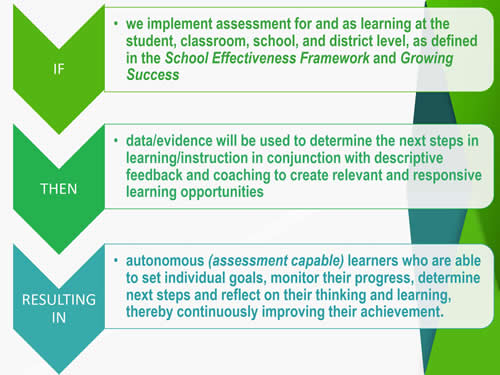Modernizing student evaluation in 3 steps
This district used a framework to gather teacher data on modernizing student evaluation and assessment
The Algoma District School Board (ADSB), located in Ontario, Canada, serves a diverse group of 9,400 students across 39 elementary and 10 secondary schools. Through our strategic priorities of achievement, well-being and engagement, we seek to graduate confident learners, caring citizens.
For the past number of years, our district has focused on diagnostic and formative assessment, and how to plan curriculum that implements deeper learning, while ensuring that teachers are equipped with the resources they need to assist every student.
Related content: How we built an immersive learning environment
Our district uses the School Effectiveness Framework (SEF), a tool that is based on best practices, to help us effectively monitor, reflect and gather teacher data throughout our system. In October 2017, we conducted a district-wide (SEF) survey among teachers, and results found that the most urgent learning need was support on assessments.
Educational research confirms that assessment is a significant driver of student learning and educational change, hence the phrase “assessment drives instruction.” We realized that assessment must be the foundation of our work.
Here are 3 steps that we followed to modernize student evaluation and to make assessment a priority.
1. Drive action
Through the results of the SEF survey, we determined that effective, modern assessment was a priority. Assessment not only feeds and drives our Board Improvement Plan, but also supports teachers in providing responsive and relevant learning opportunities to students in literacy and numeracy.
To drive action, it’s important to first evaluate the current needs of your school or district. Whether it’s through a survey or committee, it’s crucial to first consider teacher sentiment towards assessment, and if there’s room for improvement.
Our district used an ‘If, Then, Resulting In’ model to start the process. We used this as a visual guide when creating a strategy to drive change. In alignment with Ontario’s Growing Success: Assessment, Evaluation and Reporting in Ontario’s Schools, Kindergarten to Grade 12 policy, we created a framework where assessment strategies focus on documenting and evaluating student learning. This way, assessment would effectively judge student progress, while providing teachers with a new and innovative way to do so.
An effective strategy will support broad educational standards, while also fitting the individual needs of your district. To support our strategy, it was necessary to implement tools that would help teachers to easily collect evidence that could inform student progress. This leads us to our next step, which is student evaluation through evidence items.
2. Collect evidence
Because creating digitally-literate students is a core value of ADSB, it should come as no surprise that we’re always seeking new ways to incorporate technology in the classroom. After conducting research, we decided to conduct a district-wide deployment of a single learning & analytics platform. Through this program, teachers can easily assess student progress to standards while capturing observations and other learning evidence, placing information in individual student portfolios.
During assignments, teachers and students use the Edsby Capture app to collect photo, video and audio of learning evidence. This has been fundamental in assisting teachers with capturing important student observations and conversations over a period of time. Once evidence items are captured, teachers classify evidence according to different competencies, and analyze assessments. Through this method, teachers are given an alternative form of student evaluation, and students are empowered to self-assess and determine next steps in learning.
3. Empower students, parents, and teachers
After incorporating this new student evaluation strategy this year, teachers have noted more engagement from students and from parents. Evidence provides a more holistic view of student progress over time, and achievement is visible. This will be especially beneficial during report card time, since teachers can more easily consider all evidence of achievement for overall expectations. This will bring more depth to evaluation than a score on a quiz could accomplish.
Modernizing student evaluation and assessment has been a journey that fuels questions, conversations, reflections, and ultimately, better analytical insights, for our district. By prioritizing effective assessment, we’ve been able to foster growth, and create an environment of continuous learning.
